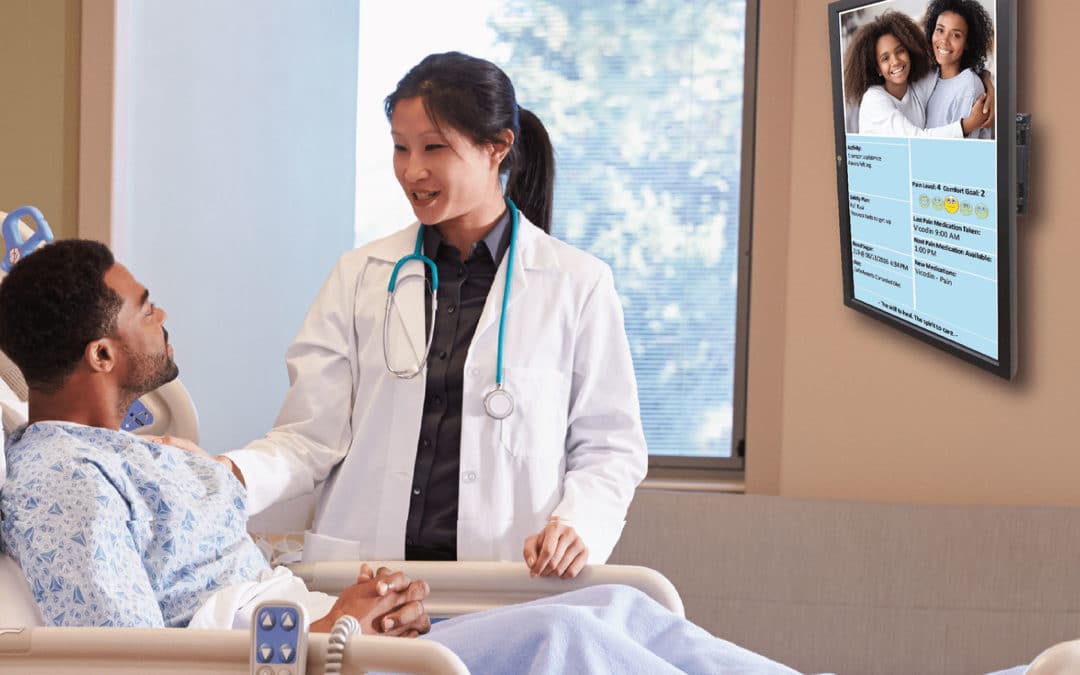As health care professionals, the nature of our work has become progressively more complex and demanding. Strategies to reduce preventable medical errors continue to be a looming challenge. Industry leaders are in constant pursuit of solutions that assure patient safety and excellence in quality of care. Some research indicates that adverse events occur in 1 of 3 hospital admissions.1 In this post, we describe strategies that enhance effective communication; with the ultimate result of significantly decreasing the potential for medical errors.
Adopt a Culture of Safety
The crucial first step in preventing medical errors is the full commitment of leadership to adopt a culture of safety. On the 20th anniversary of the influential work by the Institute of Medicine, “To Err is Human,” hospital executives emphasized the value of creating a workforce environment in which medical errors and near-misses can be openly discussed.2
Experts urge managers to embrace an attitude of shared responsibility rather than assigning blame. This creates a supportive atmosphere in which caregivers can openly express safety concerns. They also suggest streamlining processes to help manage the continuously increasing complexities of providing excellent patient care.3
The concept of the safety huddle is another important characteristic of adopting a safety culture. Safety huddles are interdisciplinary, collaborative processes that often occur after an adverse event. Managers and front-line staff problem-solve to develop procedures aimed at preventing future adverse events. Many lives have been saved and medical errors prevented by adopting this strategy.4
Evaluate Patient Hand-off Processes
Patient hand-offs are critical to assure that important information is relayed to other staff. Research has revealed that the length of patient discussions decrease progressively as hand-off sessions near their end, so that the last patients are discussed less than the first. Sometimes by as much as 50%! Experts recommend that priorities be changed, so that for example, more complex patients are discussed earlier in hand-off sessions.5 Consistency and structure are important aspects of hand-offs. There is evidence that in some facilities nurses communicate quite differently from each other.6 A properly implemented hand-off program can decrease preventable adverse events by as much as 30%.7
Successful hand-offs share several important characteristics:
- Interactivity, allowing questions between giver and receiver.
- Limited interruptions.
- Repeat-backs and read-backs when needed.
- A structured hand-off guide or checklist to ensure consistency for all patients.8
Embrace Technology
Judicious use of technology has been proven to positively impact safety. Well-designed systems improve abilities in patient monitoring and surveillance.9 Technological innovations have played a major role in managing patient care and quality improvement.10 Communication and collaboration platforms allow busy nurses to streamline many patient care duties. This results in increased time for more personal interactions, such as patient and family engagement. Additionally, patients themselves can be more involved in their care with tools such as easy-to-read electronic whiteboards.
Summary and Conclusion
In this article, West-Com Nurse Call Systems has provided guidance on improving team communication for the benefit of patient safety medical error reduction. When considering how to maximize safety, managers and leaders should ask themselves the following questions:
- What actions can I take to improve the culture of safety in my facility?
- What protocols can I establish to improve hand-off processes?
- If I were a patient, how would I want my caregivers to communicate?
- How can I leverage technology to achieve patient safety goals?
In the spirit of continuous improvement, health care professionals acknowledge that tasks of high-quality care, patient safety, and patient satisfaction will never end completely. Be that as it may, these challenges will also never be insurmountable.
Contact West-Com Nurse Call Systems if you are interested in learning about improved team communications solutions. We will help you leverage technology to reduce preventable medical errors.
(707)428-5900
www.westcomncs.com
- Classen, D. C., Resar, R., Griffin, F., Federico, F., Frankel, T., Kimmel, N.,. . . James, B. C. (2011). ‘Global trigger tool’ shows that adverse eventsin hospitals may be ten times greater than previously measured. HealthAffairs, 30, 581–589. Retrieved from: https://www.healthaffairs.org/doi/pdf/10.1377/hlthaff.2011.0190
- Bhatt, J. Begley, R. (n.d.). Patient safety 20 years after ‘To Err Is Human’ [podcast]. [Interviewer T. Hetterly] Retrieved from: https://www.aha.org/advancing-health-podcast/2019-11-27-patient-safety-20-years-after-err-human.
- Ibid.
- Gerke, M.L., Uffelman, C., Chandler, K.W. (2010, May/June). Safety huddles for a culture of safety.[Blog Post]. Patient Safety and Quality Healthcare. Retrieved rom: https://www.psqh.com/analysis/safety-huddles-for-a-culture-of-safety.
- Cohen, M.D., Ilan, R., Garrett, L., LeBaron, C., Christianson, M.K. (2012). The earlier the longer: Disproportionate time allocated to patients discussed early in attending physician handoff sessions. Archives of Internal Medicine, 172(22):1762-1764. Retrieved from: https://jamanetwork.com/journals/jamainternalmedicine/fullarticle/1391009.
- Starmer, A.J., Spector, N.D., Srivastava, R., West, D.C., Rosenbluth, G., Allen, A.D…Landrigan, C.P [I-PASS Study Group]. Changes in medical errors after implementation of a handoff program. The New England Journal of Medicine, 371(19). 1803-1812.
- Delmarva Foundation and the Maryland Patient Safety Center for the Handoffs and Transition Learning Network. (2007). Retrieved from: https://www.marylandpatientsafety.org/html/learning_network/hts/materials/resources/handoffs/HandoffsStrategiesChart.pdf
- Institute of Medicine 2001. Crossing the quality chasm: A new health system for the 21st century. Washington, DC: The National Academies Press. Retrieved from: https://www.nationalacademies.org/hmd/health-and-medicine-division. https://doi.org/10.17226/10027.
- Institute of Medicine 2001. Crossing the quality chasm: A new health system for the 21st century. Washington, DC: The National Academies Press. Retrieved from: https://www.nationalacademies.org/hmd/health-and-medicine-division. https://doi.org/10.17226/10027.
- American Hospital Association (2018, July). Improving Patient Safety and Health Care Quality through Health Information Technology. Trendwatch. Retrieved from: https://www.aha.org/system/files/2018-07/18-07-trendwatch-issue-brief3-patient-safety-quality-health-it.pdf

